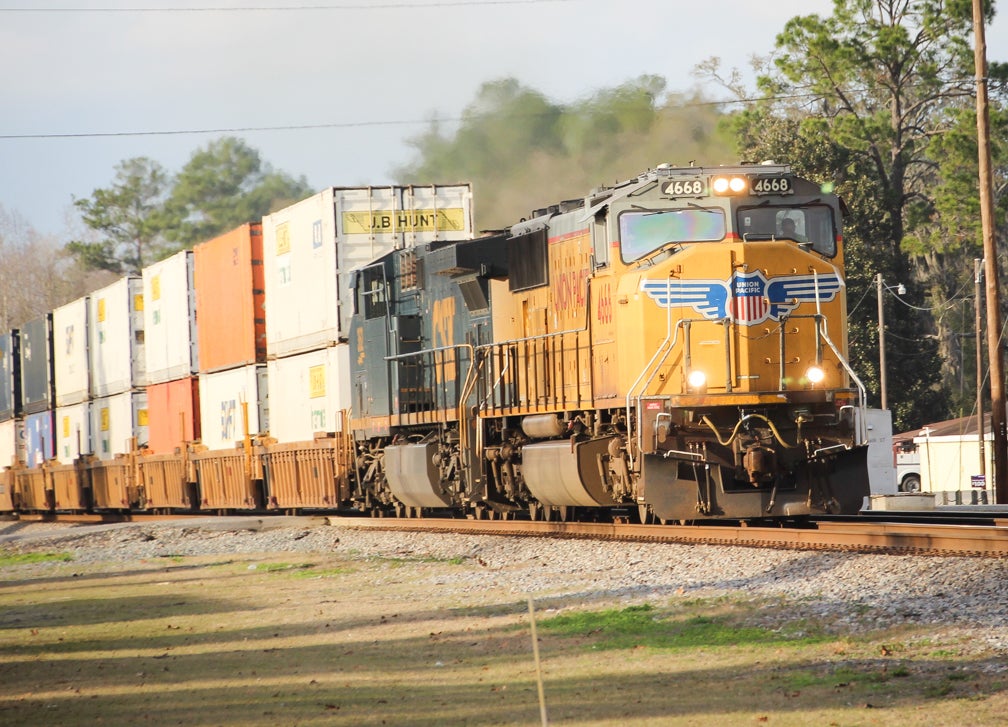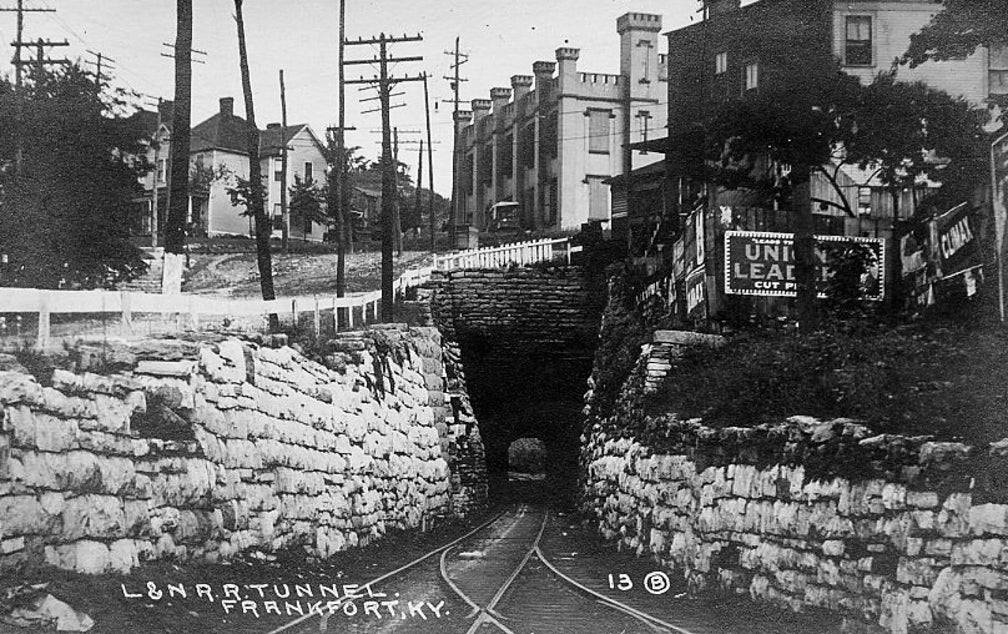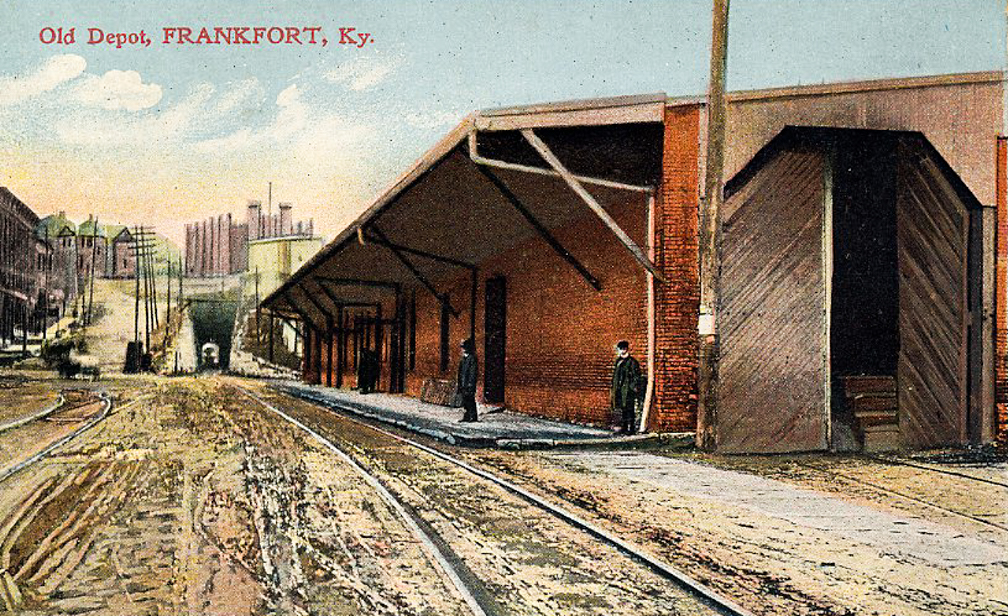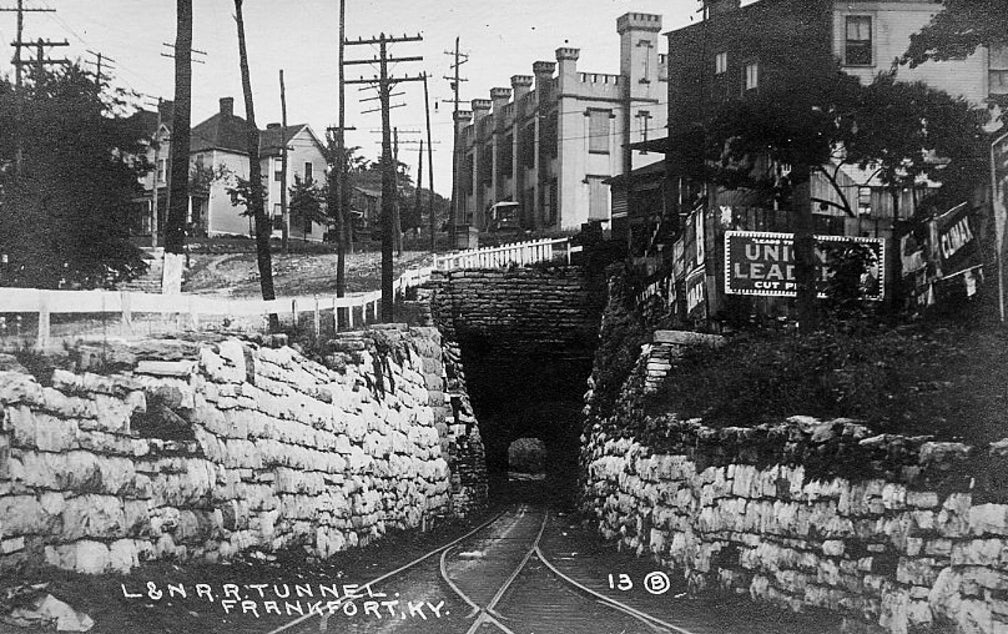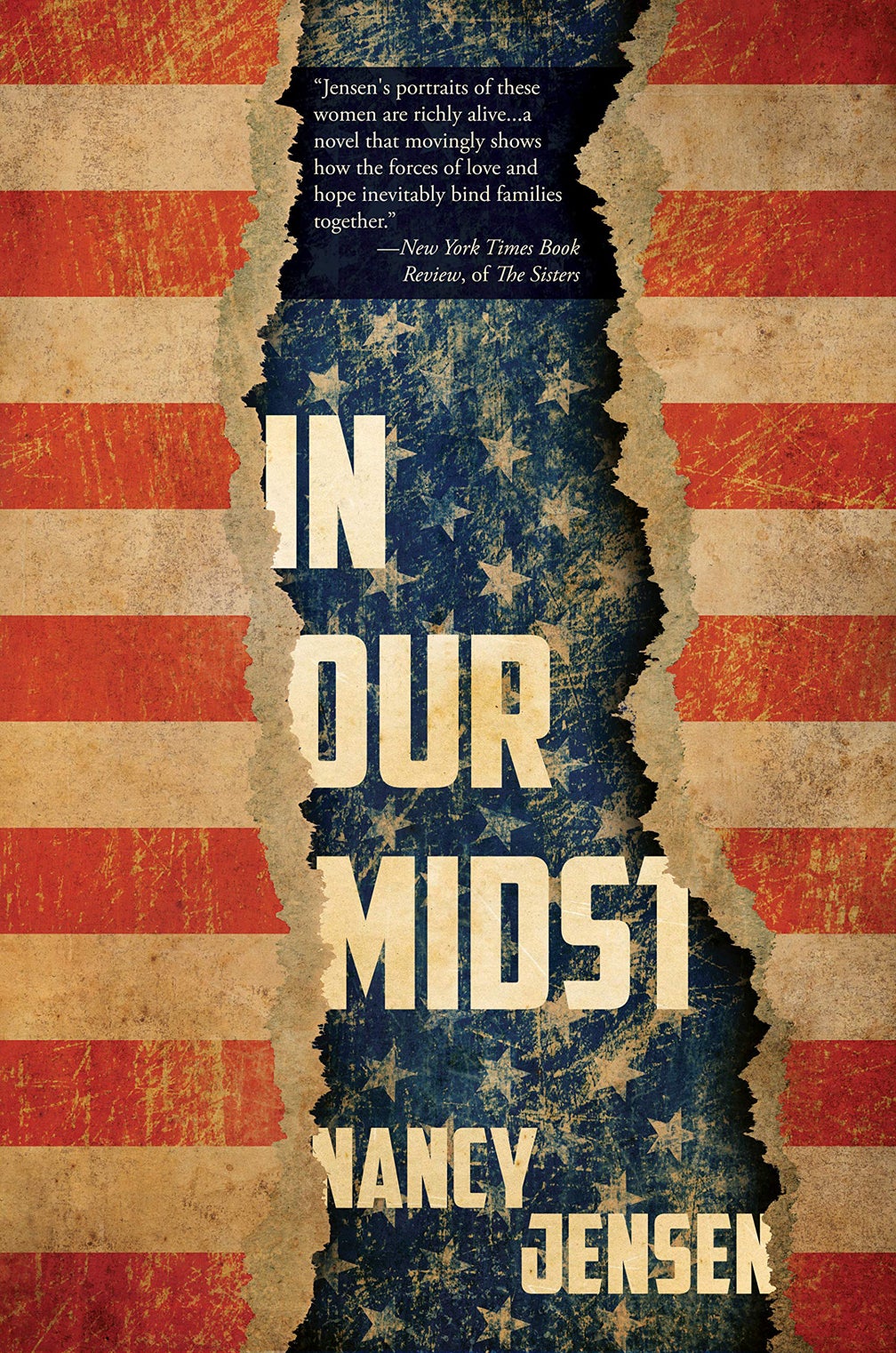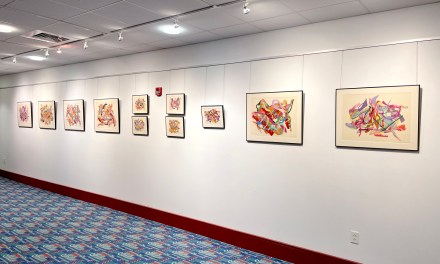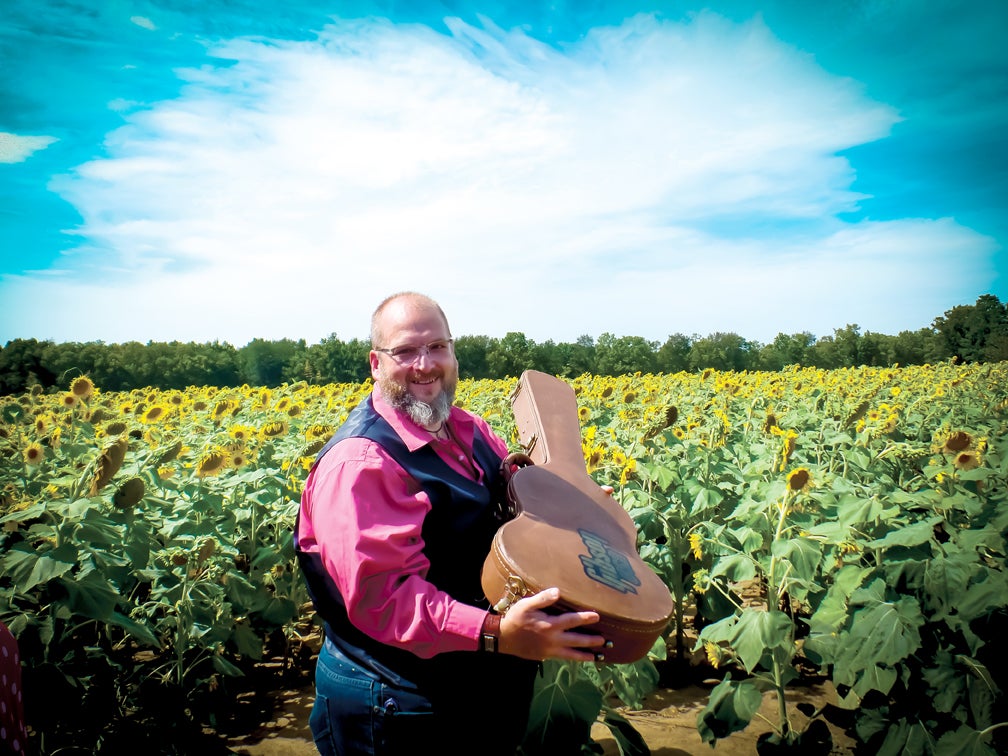By Charles H. Bogart
I am constantly amazed at the number of people who live and work in Frankfort who are unaware that there is a railroad tunnel in downtown Frankfort. The tunnel allows the railroad track that descends from Jett Hill via Vaughn’s Branch to enter downtown.
Without this tunnel, the rails from Lexington would end on the southside of Main Street, just behind the State Arsenal Building; however, by using the tunnel, the rails pierce Main Street Hill and enter Broadway at High Street.
In 1832, the Lexington & Ohio Railroad (L&O) began to build west from Lexington, Kentucky, to Portland, Kentucky, located at the lower end of the Falls of the Ohio. The L&O’s westward journey, however, ended in 1836 when it reached Frankfort. The L&O’s track in Frankfort stopped at the top of the Main Street hill — the present-day site of Kentucky State University’s Exum Hall.
The freight and passenger cars of L&O trains, upon arriving at the top of Frankfort’s Main Street hill, were lowered, one at a time by an incline, to Broadway. Once on Broadway, the cars were pulled by horse to the steamboat landing, located at the foot of Broadway. Here the cars were unloaded with goods outbound and loaded with goods inbound.
In 1848, L&O entered bankruptcy and was sold on the steps of the Old Capitol. The L&O’s new owners renamed the railroad the Lexington & Frankfort Railroad (Lex&F). The first priority of the owners of the Lex&F was to build a new rail entrance into downtown Frankfort.
Employing Irish laborers, the Lex&F built what today is R. J. Corman’s Lexington rail entrance into Frankfort. The 1850 built Lex&F rail line deviated from the 1836 built L&O route near Versailles Road and Locust Lane. The new Lex&F rail route followed Vaughn Branch to Glenns Creek Road and then turned south to follow the Kentucky River to Main Street Hill.
The curve in the rail track at Glenns Creek Road is known as “Ten-mile Curve,” for this is the maximum speed a train can travel at to safely navigate the curve.
Blocked from reaching Broadway by the mass of Main Street hill and the State Arsenal Building that sat on it, the Lex&F’s owners turned to their Irish laborers. During January and February of 1850, laborers, using hand tools, dug a 515-foot long tunnel under the State Arsenal.
The February 1850 date for the opening of Frankfort’s Main Street Railroad Tunnel, makes the Frankfort tunnel the oldest railroad tunnel west of the Appalachian Mountains.
The year 1850 saw another railroad reach Frankfort, the Louisville & Frankfort Railroad (Lou&F), which ran from Louisville to LaGrange, Kentucky, before turning south for Christiansburg, Kentucky, and Frankfort.
Therefore, starting in the summer of 1850, Frankfort merchants and farmers could ship their goods to Lexington or Louisville in a matter of hours. Then in 1860, new track constructed in Kentucky extended rails north from Lexington to Covington, Kentucky, and a connection with the Cincinnati, Ohio, rail center; and south from Louisville to Nashville, Tennessee; and on to Atlanta, Georgia.
At Jeffersonville, Indiana, across the Ohio River from Louisville, the Louisville, New Albany & Chicago Railroad (LNA&C) provided rail service north to Chicago, Illinois.
During its lifetime, the Frankfort Tunnel has been owned by Lex&F, 1850-1869; Louisville Cincinnati & Lexington Railroad, 1869-1881; Louisville & Nashville Railroad, 1881-1982; Seaboard Railroad System, 1982-1987; and CSX Transportation, 1987 until today. The Frankfort Tunnel has also been used by the Chesapeake & Ohio Railway, 1881-1987; Kentucky Highland Railroad, 1908 – 1915; and R.J. Corman Railroad, 2003 until today.
At the beginning of the 21st century, the Frankfort Railroad Tunnel had become an impediment to rail shipments. Its roof was too low and its width too narrow to handle high cube boxcars, auto racks, double stacks and 110-ton covered hoppers.
The same problem of having tunnels too small to handle double stack trains faced Norfolk Southern Railway (NS) along their mainline in West Virginia. NS wanted to convert its West Virginia mainline into a double stack corridor to move containers from Norfolk, Virginia, to Chicago.
Corman, in response to NS’s request for proposals to enlarge their tunnels, stated that he had found a fast and economical way by which to enlarge rail tunnels to a size to handle double stack and other oversize loads. During 2007, Corman deployed his engineering force to Frankfort with orders to enlarge the Frankfort Tunnel to accommodate double stack loads.
Using the concept developed by Corman, engineers from the R. J. Corman Group, with support from R. J. Corman Maintenance-of-Way workers, increased both the height and width of the Frankfort Tunnel. This project came in on time and under budget.
While no double stack trains have ever run through Frankfort’s Tunnel, NS used the Frankfort Tunnel proof-of-concept work as their basis for rebuilding their non-compliant double stack tunnels in West Virginia.
In regard to the Frankfort Tunnel, R.J. Corman Railroad asked that no one use the Frankfort Tunnel portal for a photo shoot or as a pedestrian short cut. Remember, any time is train time, so look and listen for a R.J. Corman train when near the tunnel.
Also, remember that the Capital City Museum is always looking for photos of the Frankfort Tunnel and stories about it. Urban legend has it that someone from Frankfort shot a movie or video tape from a locomotive or caboose while going through the Frankfort Tunnel. You would make Russ Hatter’s day if you have any information on the location of this film/video.
